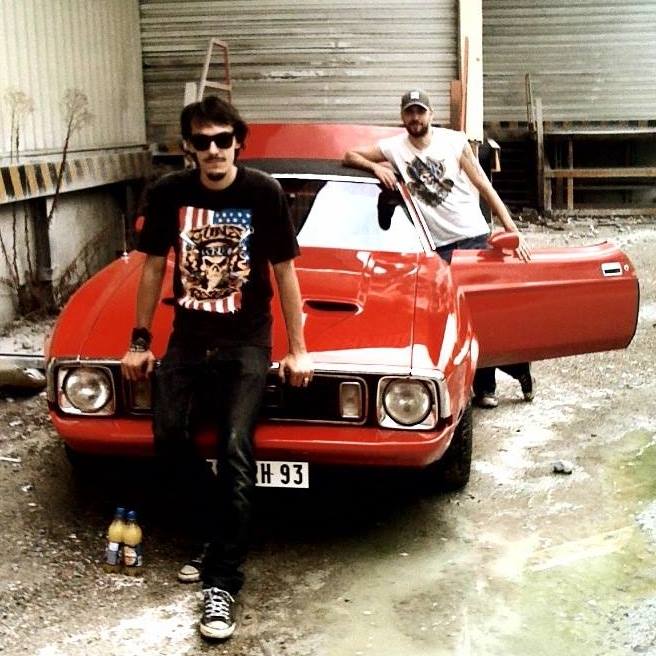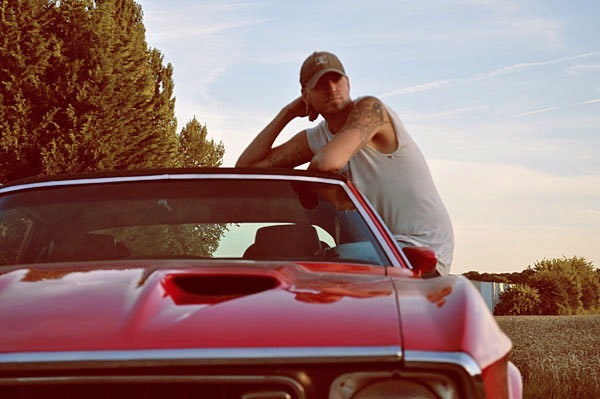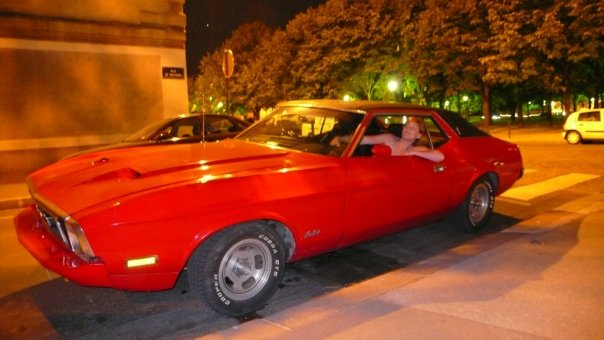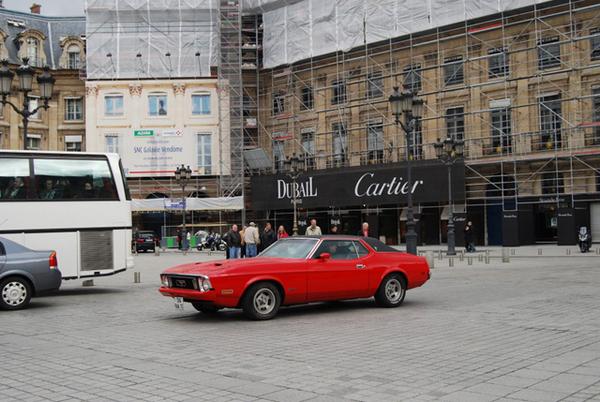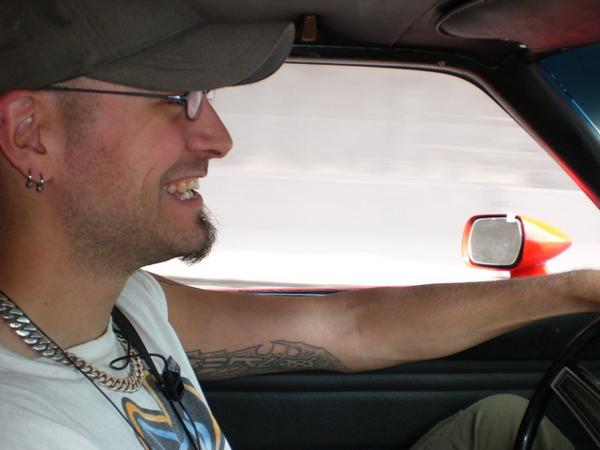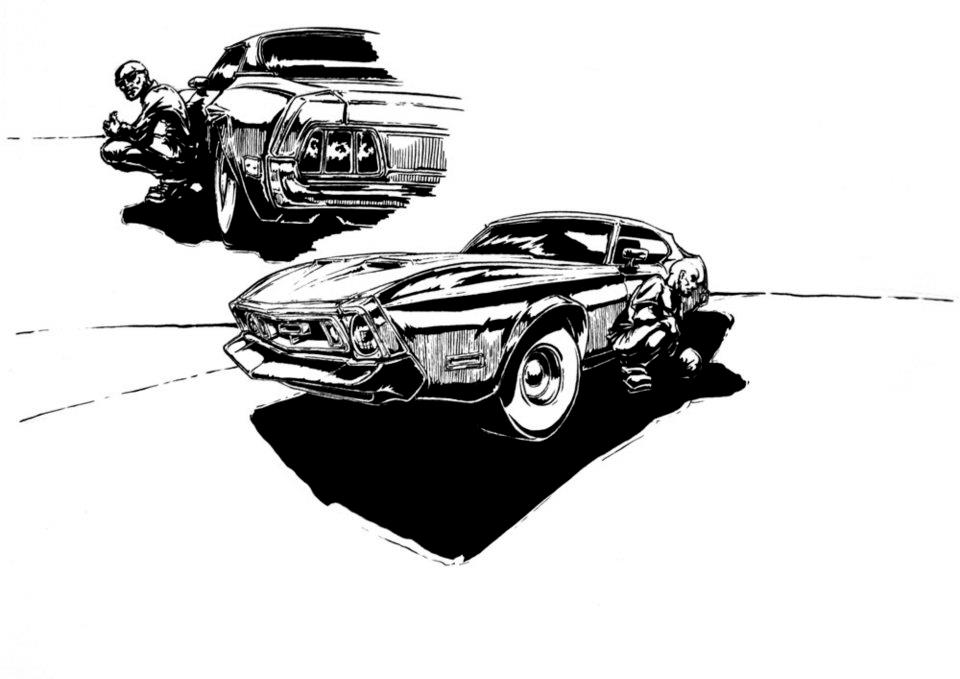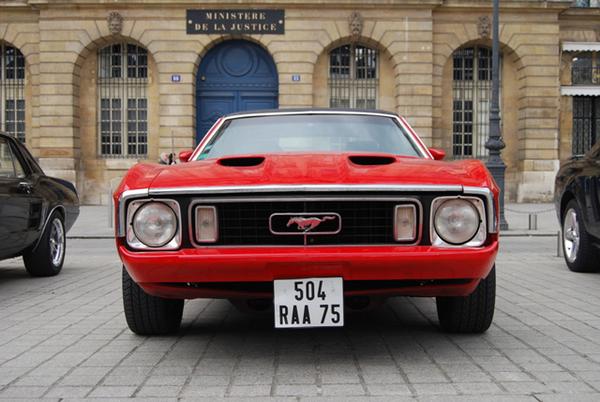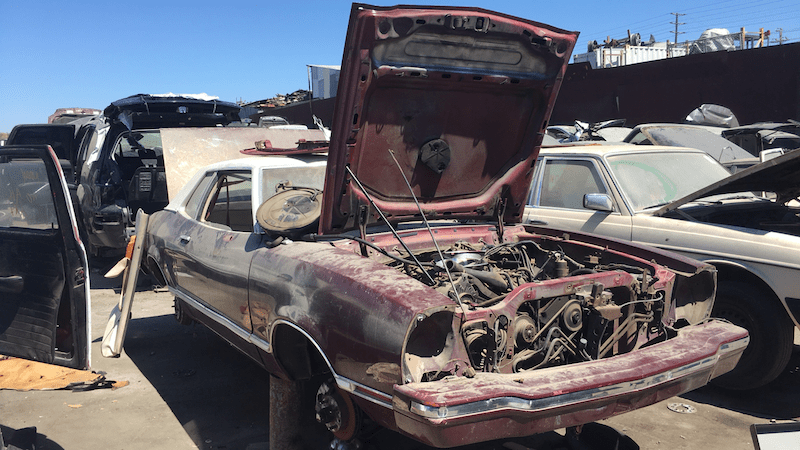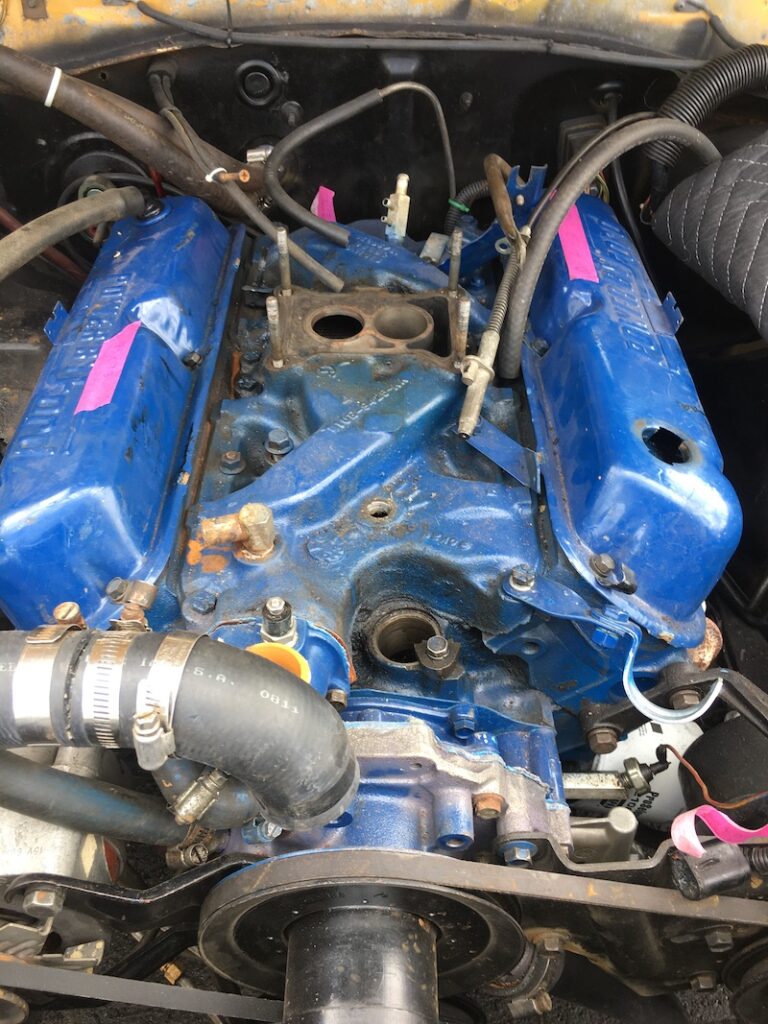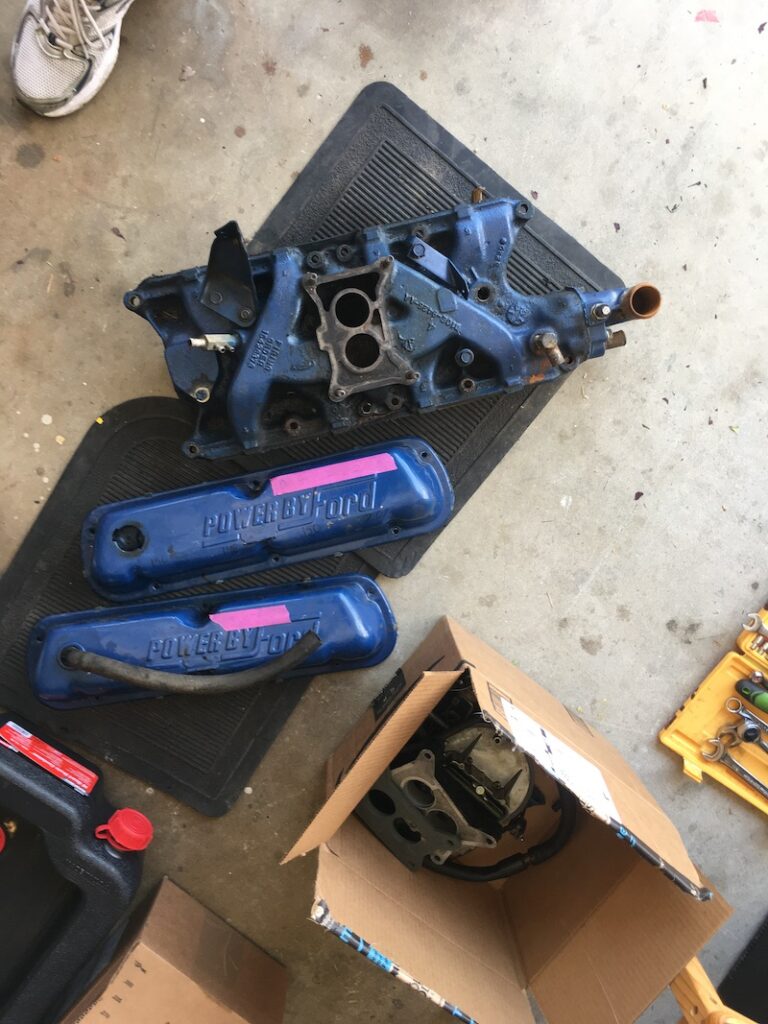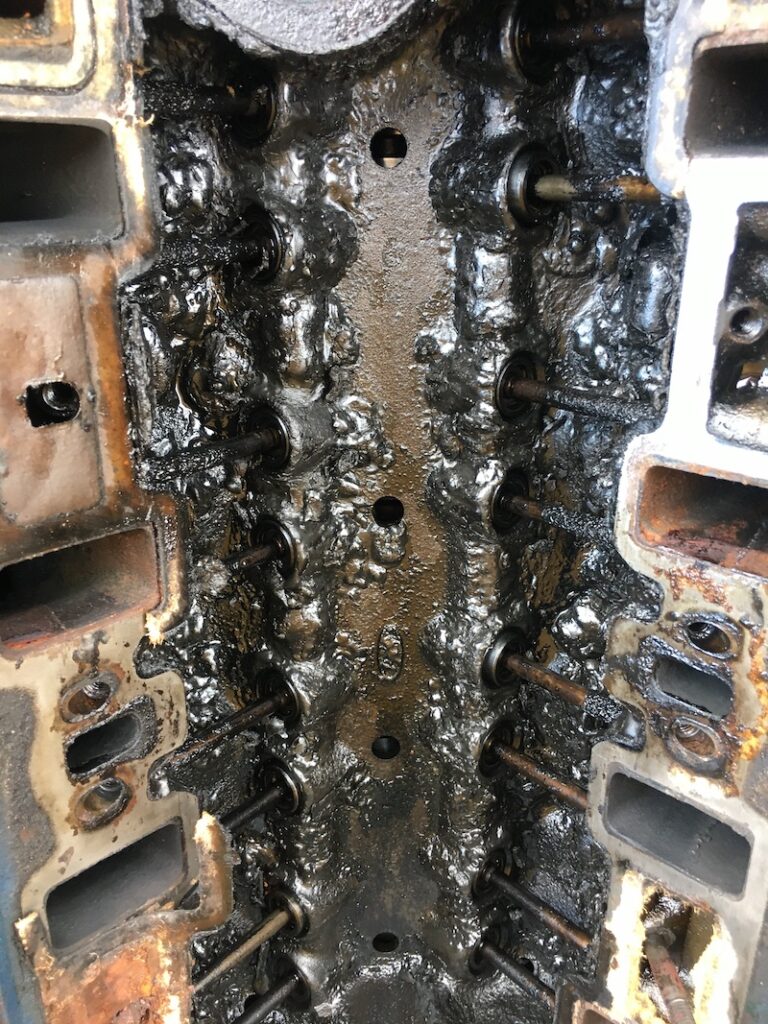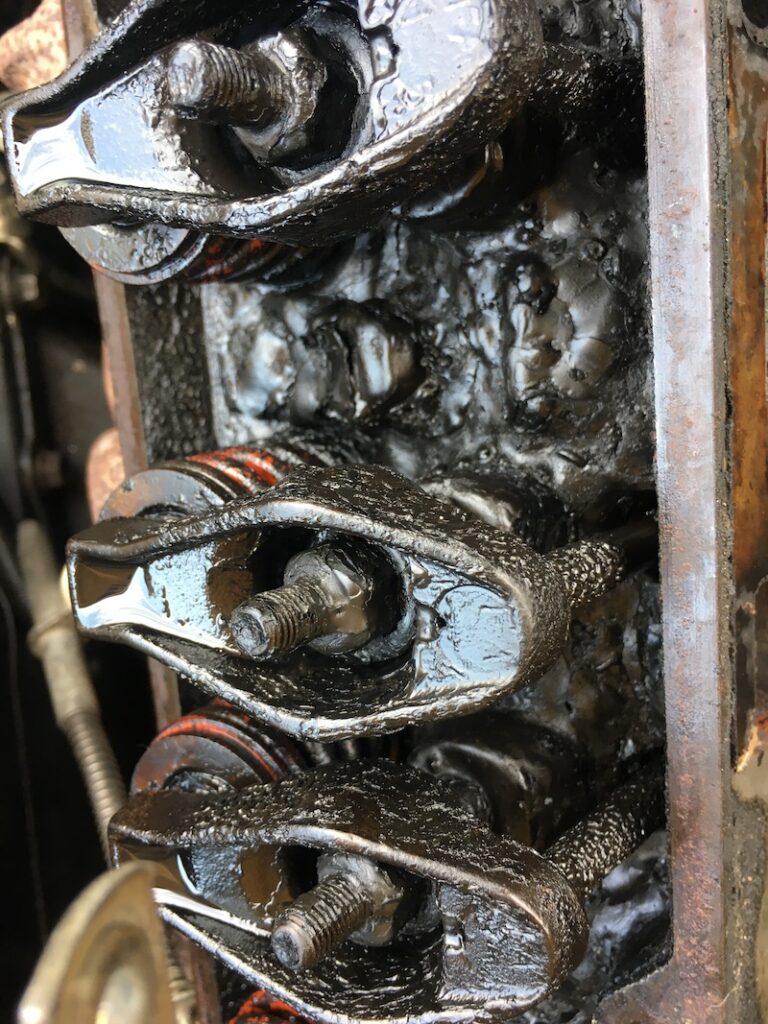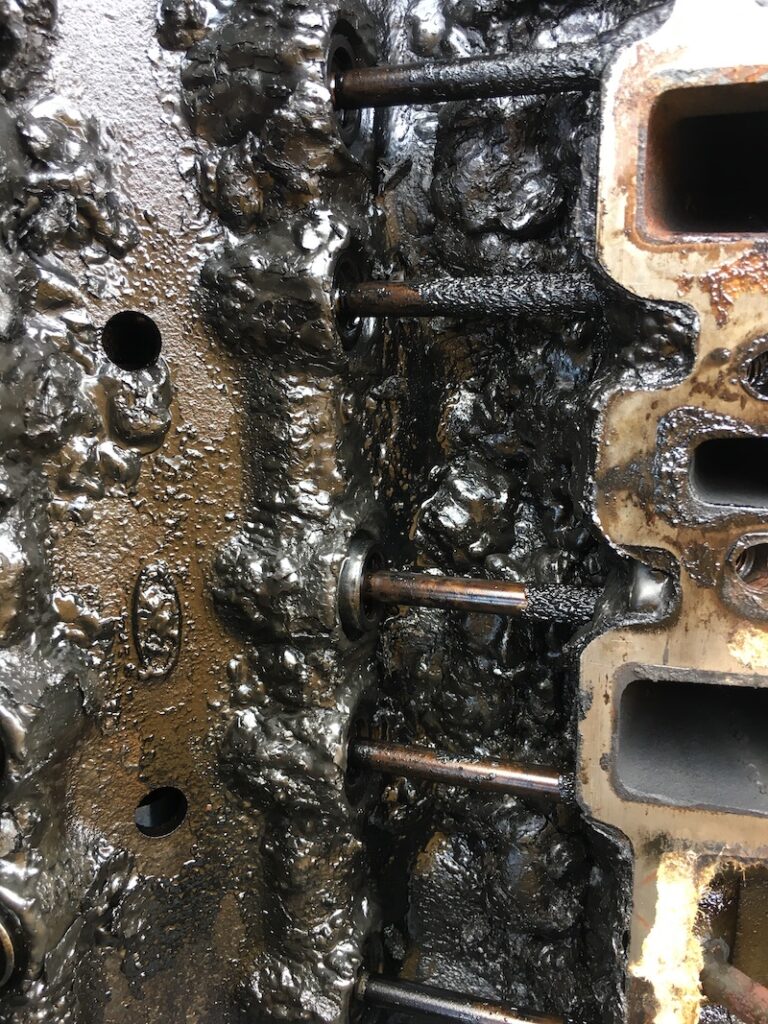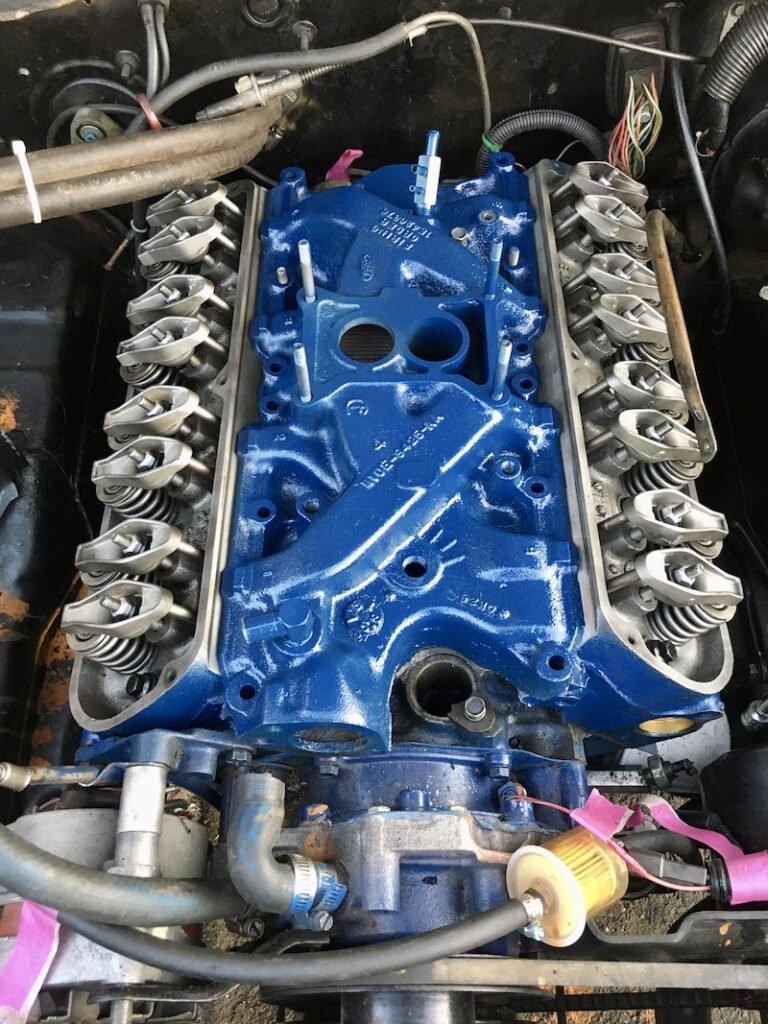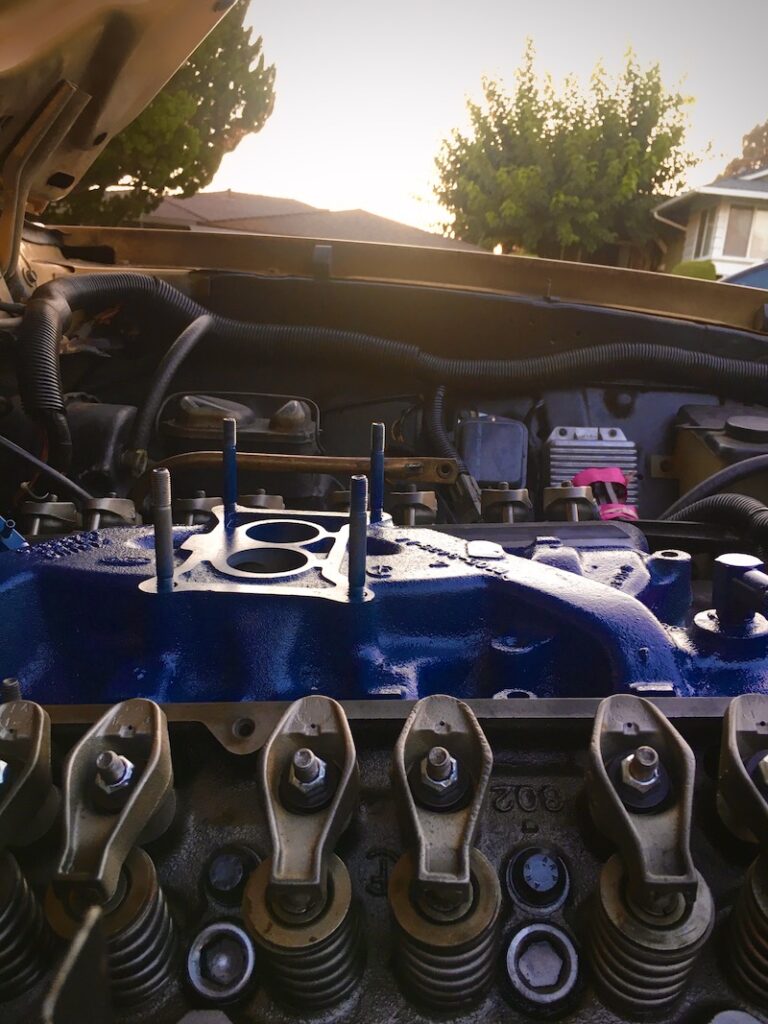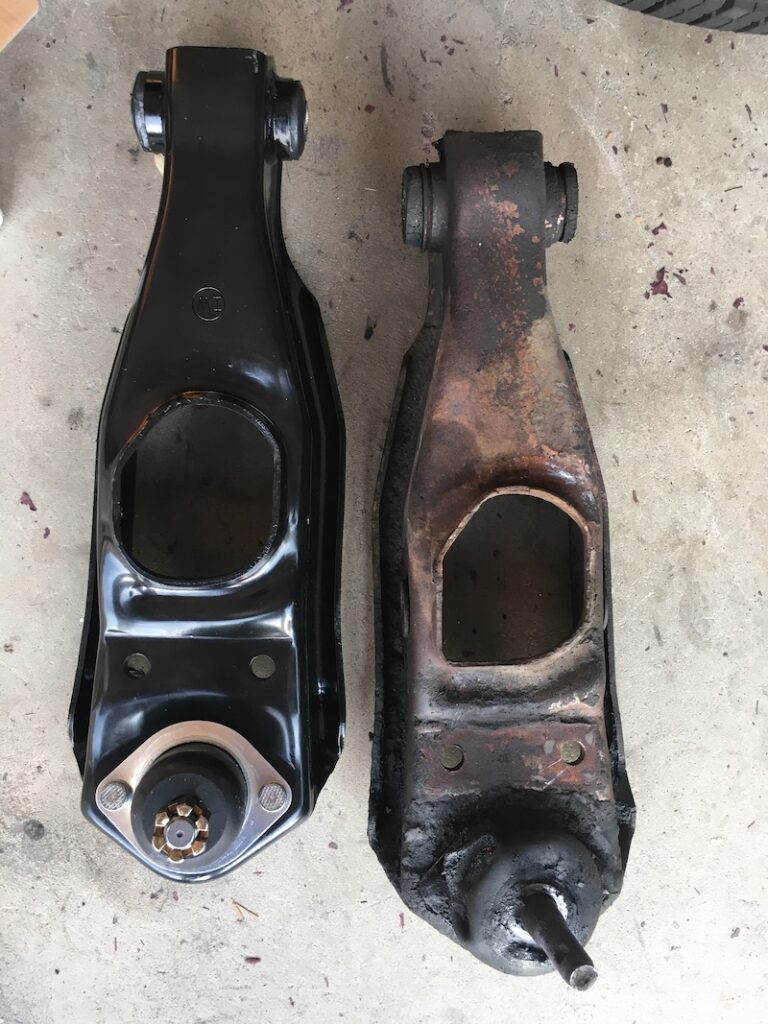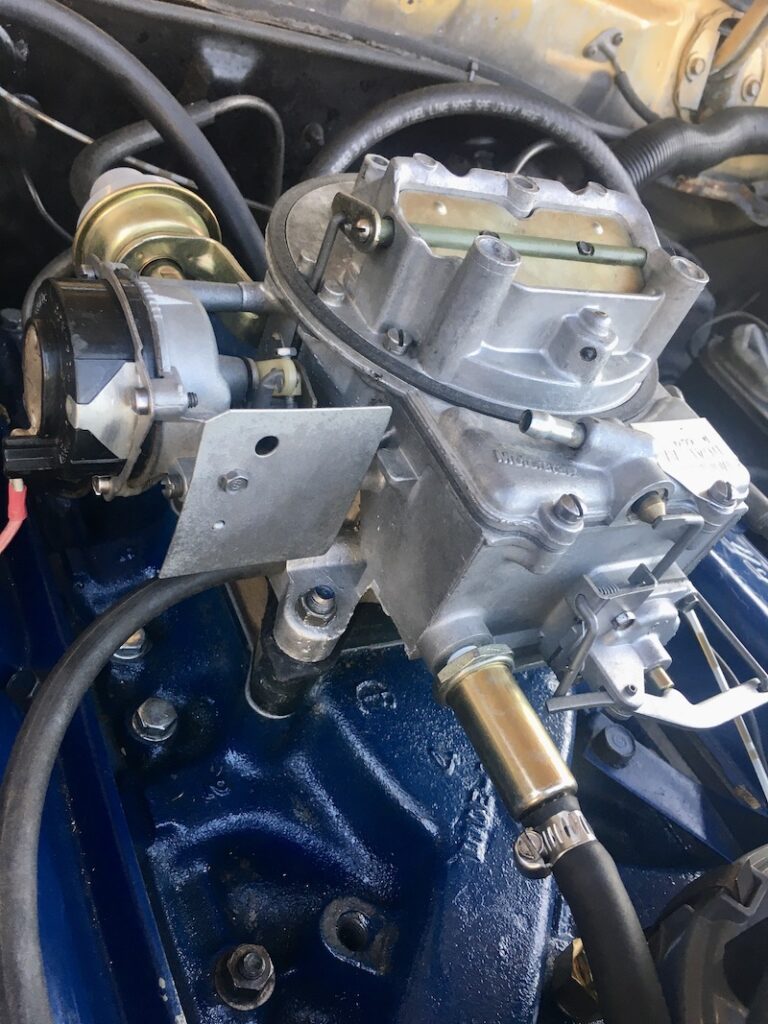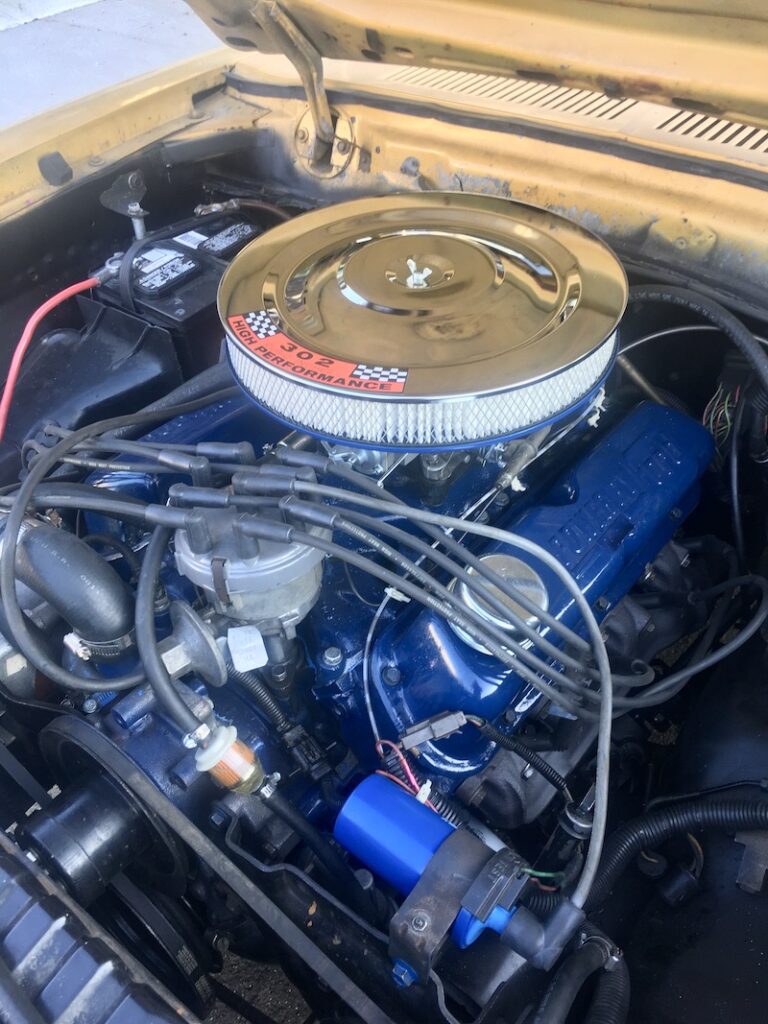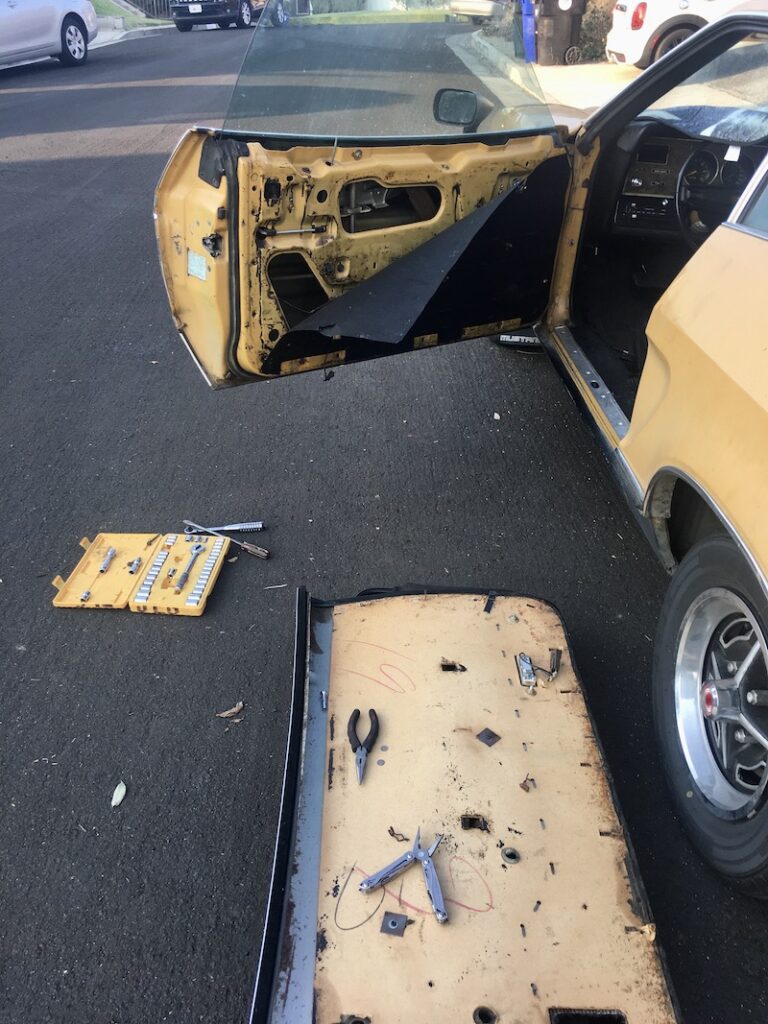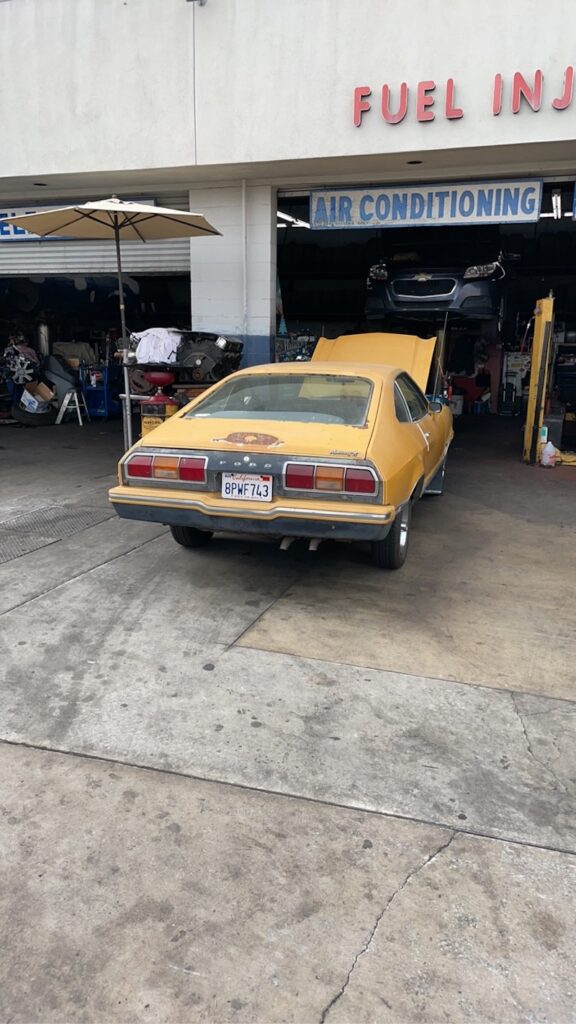Since he was a child, Jérémy has always traveled a lot. He even went to live abroad afterwards. He grew up between Paris and Casablanca, stayed in Australia where he developed a passion for V8s, then worked for a year in India. He has no particular attachment to a specific place on the planet. Since 1983, Jérémy has been in Los Angeles, California a few times without being particularly attached to the City of Angels …
His first encounter with a Ford Mustang was in 2006, when he had just gathered the budget to afford a muscle car. He doesn’t know much about it but decides to learn on the job. He bought a 1973 Mustang Grande, which the seller said was equipped with a two-barrel 302ci V8. He quickly realizes that the Mustang has in fact a 351ci Cleveland 4V Cobra Jet and not the 302 as described by the previous owner. Jérémy renovates it to his liking and optimizes the performance of the beast.
In 2009, Jérémy lived in France and worked in the animation world. He encounters difficulties in setting up a project despite a motivated and determined team. He quickly realizes that producing a five-minute pilot would cost him around fifty thousand euros… At the same time, a friend of his, a filmmaker by trade, leaves to shoot his own live-action pilot between California and Utah, in the United States. The project concerns “Demolition Derby” and cars, which is precisely Jérémy’s specialty. His friend asks him for a hand. It is May 2009 and Jérémy is interested in the subject closely. He finds that filming in real life is much easier than in animated series. It’s a revelation for him: we take a zero out of the budget and he founds out a very interesting production dynamics in the Los Angeles area. It did not take more for our inveterate traveler to book a ticket and go to Uncle Sam’s country. In September, Jérémy took a vacation / photo shoot trip in Los Angeles and decided to try the “Hollywood” adventure. The “city of cinema” is to his liking: the special light of the West Coast and summer all year round make its work, Jérémy falls under its spell.
The American Dream
So in 2010, our French friend decided to sell his Mustang to finance his emigration to the USA. The first days in the States were not easy for Jérémy because not only did he arrive without any contact in the film industry, but he also doesn’t have the slightest cinematic experience apart from animation. In Los Angeles, it is common knowledge that “it takes years to become an overnight success”. Times are difficult for our friend, he decides to bite his teeth into “American Dream” and tries the solo adventure: he invests part of his savings in the shooting of his very first short film. He thus writes a small screenplay inspired by road trips and Californian deserts. For the purposes of filming, Jérémy rents a 1976 El Camino and shoot his project in the desert at a three-hour drive from LA. This is his first experience as a director.
The difficulties of starting all over again
This first experience allowed him to expand his network there, but unfortunately not enough to find a job or to obtain a permanent visa. He has no choice, at the end of the validity of his tourist visa, he will have to return to France. It is a difficult time where Jérémy lives day to day, sleeping on his friends’ couch, and doing his best to activate his network, all over the world. It is finally a Parisian musician for whom he had taken a series of photos that tells him that a production company from Los Angeles is coming to make a music video in France. She recommends that he work on the project and thus boost fate a little more… Which works enough to convince Jérémy to return to California. Unfortunately, the leads he had imagined did not materialize immediately. The young Frenchman begins to face the reality of a homecoming in the face, before the production company finally contacts him for a feature film with Amber Heard requiring a thirty-second cartoon sequence. Jérémy gets down to business and the company provides him with a work visa! And this is only the gateway to a longer project: three months after its debut, the visa in hand and the cartoon produced, the company asks him to produce the digital special effects for the film. This is his first American feature film!
Following this unexpected project, Jérémy lives four years of odd jobs. He calls this period of his life the “golden poverty”: admittedly, he struggles to pay his bills, but he lives in Venice Beach, five blocks from the ocean, works daily on movie sets, does a profession which fascinates him and plays basket on the most legendary playgrounds in the world!
He uses $ 3,000 to buy a 1976 Mercury Comet equipped with a 250ci 4.1l inline six that he uses as a daily driver… The latter, fun to drive and easy to repair when it breaks down (at least once a month!) allows him to learn the details of auto mechanics with the overhaul of almost all of the car’s peripherals (carburetor, starter, power steering, water pump, etc.) but not the engine. He rents his car several times for photo and video sessions, whether for a Japanese Boys Band or even for Hélène Segara… Jérémy and his car are even filmed in an episode of the California Master Cars television series on AB Moteurs (known today as “Automoto La Chaîne”). He will resell the beauty in 2019 due to financial difficulties related to his immigration.
A confined purchase
Based in the Los Angeles area for ten years and now with a Green Card, Jérémy has had the opportunity to live in different neighborhoods such as Crenshaw and Silver Lake. He still works with the same company, for which he has already made three feature films, whose one on which he is a co-producer. In recent years, he has had the opportunity to meet some of his idols and get to know some of them. For example, the last big music video he made was for Billy from the Biohazard band, which he was a fan in his high school’s days. He also had the opportunity to work in the Chicago area, Illinois, Texas or in Bonneville, Utah with Luc Jacquet, the director of March of the Penguins …
Unfortunately, in 2020, the health crisis hits the whole world. In the United States, it is a 35-year-old American who traveled to the land of the rising sun and hospitalized in Washington state on January 21st with symptoms of Covid-19 that ignites the powder. In Europe, three French people returning from China are hospitalized in Paris and Bordeaux, with the same diagnosis. In short, the planet is about to experience difficult times. For his part, Jérémy faces a shortage of activity for several months. In August, he searches at all costs for a reason to get out of his house, get some fresh air and occupy his mind. The first idea that comes to mind is a project car. The goal is to find a very cheap car that will allow him to open the engine and refine his auto mechanic skills by leaving home and learning without urgency: he is stranded at home and he can do everything by foot. One of the cars he cares about is the Mustang II: this little car in its Hatchback version is reminiscent of European cars. He was fortunate enough to own a 1973 Mustang Grande, the biggest Mustang ever made, so he’s now interested in the smaller one. After only some researches, Jérémy came across a Facebook page dedicated to the Mustang II and one of them was on sale in Washington state, near Portland. He cannot travel there and knows the region, which is known to be rainy. He is not very optimistic: buying a car with all the mechanics to do is not a problem, but rust is a money pit that he is not ready to take on. He still decides to pay for the services of an expert who goes there and confirms that there is almost no rust on the 1974 car, and even less than on the Californian Comet that he owned and bought in the desert… On the other hand, the list of mechanical work to be done is as long as the arm, but that is the objective! Jérémy is well aware that the Mustang II is not popular and, to a certain extent, that suits him since it allows him to get this one very cheap.
The previous (female) owner had owned the car since high school and is now retiring. With her husband, they sell their house to finance the purchase of a recreational vehicle and live on the road. There is therefore no room for the Mustang and it must leave. Ideally, they would like to sell the beauty to someone who would love her as much as her previous owner was able to appreciate her throughout his life. When Jérémy makes contact with her, the latter judges that he could well be that person. Unfortunately, the cost of transportation between Portland and Los Angeles is almost $ 800. Jérémy suggests that the price be lowered, while taking care not to offend the previous owner. She accepts the transaction for $ 2,000.
Our French friend got a 1974 Mustang II Mach 1 for just $ 2000. 1974 is the only year the Mustang did not have an optional V8 (apart from the Mexican models) but Jérémy’s did have a 302ci V8. The previous owner did have this engine from a 1970 Maverick put in five years prior to sale. Unfortunately, the work was not carried out according to the rules of the art and the Mustang inherits an engine block and a carburetor from 1970, some accessories such as the ignition from 1976 and some components from the 90s. Also, the previous owner clarified before the sale that a cylinder has low compression and the suspensions and the steering have seen better days.
Mechanics and bodywork
The Mustang arrives at Jérémy’s in August 2020. Despite the concerns specified by the previous owner, it starts and drives. Certainly, with a big white smoke which suggests a cylinder head gasket, but it runs! The young enthusiast begins to dismantle and restore his new project himself in front of his garage. He digs into it, learns, spends the time and keeps busy to make that typical V8 from the 60s and 70s in California purr again. Jérémy seeks to refine his American Dream, the contours of which are already well drawn.
For him, this is the first engine teardown. He discovered a mixture of cooked oil around cylinder heads and pushrods valley. As he suspected, the cylinder head gasket needs to be redone. By removing the heads, he noticed several damaged valves with the seals and seats to be replaced. The surfaces of the exhaust manifolds are also in critical condition. Never mind, Jérémy dismantles and takes everything to a machinist to repair as many parts as possible. At the same time, he buys the parts that need to be replaced (pushrods, rockers, valves, stem seals and gaskets). Luckily, the cylinders are in good condition and a simple cleaning to remove the mixture of oils and burnt gasoline is sufficient. The camshaft is also free from any defects. If the surprise is pretty good, Jérémy knew what to expect as the previous owner explained to him that with the engine swap, the camshaft, timing chain and cylinders had been checked. The rest, however, had not undergone specific checks.
When he receives the ordered and restored parts, Jérémy gets down to reassembling his car. The operation is not done without a few drops of sweat: it is his first engine reassembly and our friend is worried about putting everything back in its place without any mistake. With this activity behind him, he decides to replace the original Motorcraft 2150 carburetor with a more modern one that was included with the car but that the previous owners had not taken the time to install. Jérémy struggles to adjust the device but ends up starting the Mustang. He goes around the neighborhood. Proud to have been able to restore his car to its original state, however, he notes that a professional adjustment of the carburetor would not be a luxury.
This is followed by suspensions, power steering, shock absorbers and breaks. These activities are more physical than Jérémy imagined, but the result is up to the mark. At the end of September, most of the work is done and our friend can take the car for a parallelism adjustment. After thirty minutes on the road, with ten on the highway and just before arriving at the garage, the Mustang II stops and does not restart. Difficult to make a diagnosis, Jérémy and the mechanic of the garage where the car had an appointment do not find a solution. The tow truck takes the car home, the investigation begins. The 1976 electronic distribution module is broken. It is replaced. Then it’s the electronic ignition module that goes out for good, followed by the ignition distributor that goes through it. Everything is replaced and the Mustang ends up driving again… but almost catches fire because of the stuck needle of the new carburetor!
Neither one nor two, the old Motorcraft carburetor that Jérémy had taken care to preserve is rebuilt with new gaskets and comes back to the place he had ceded some time earlier. The compressions are measured again and the results are excellent. A friend of Jérémy’s tuning the ignition and carburetor, the Mustang purrs like it never did before. It’s noisy and it’s good!
Two problems remain to be solved: the transmission is leaking from the belt adjustment nut and the cooling system is still quite dirty (which implies overheating at high speed), despite the six cleaning cycles carried out by its new owner. Without a car lift nor transmission skills, Jérémy decides to go back to his favorite mechanic, in other words the one who took care of his Comet for everything Jérémy couldn’t do in his driveway. It is November 2020 and the professional inspects the car and looks for solutions to both problems before making the parallelism adjustment. Various works are undertaken: the coolant is inspected, the radiator cleaned again and a leak is sealed, but nothing helps. On the highway, the V8 always overheats. And as if that weren’t enough, we discover that the transmission, possibly the one that was linked to the original V6, does not match the 3.55 axle ratio. For this type of engine, you would need an axle ratio of 2.78 or 3.00 maximum.
A health situation that does not help at all…
It’s March 2021, and work on the Mustang hasn’t made much progress since November. To blame, the health situation related to COVID-19 which forced the mechanic of Jérémy to close. The resumption of activities is slowly and only since a few days. The mechanic set out to drive the car every day for two weeks to take stock of the situation and give Jérémy, as a professional, his opinion on the rest to be done. Then our French friend will be able to list the jobs, prioritize them and divide the activities between himself – for what he can accomplish himself – and the professionals. At the top of the list will surely come the transmission to be redone, the axle ratio to be changed, the wheels to be replaced by 15 inches, etc. The electrical part will not be left out since the dashboard does not turn on and there is no electricity in the cigarette lighter socket. Of course, bodywork is also planned with, at a minimum, the replacement of the hatch too attacked by corrosion to be repaired, but Jérémy has already purchased another one free of rust …
As you surely understand, this article is only an introduction to the adventure that awaits Jérémy, an adventure that we will try to follow with great interest and for which we will be offering you a new article in the coming months.


